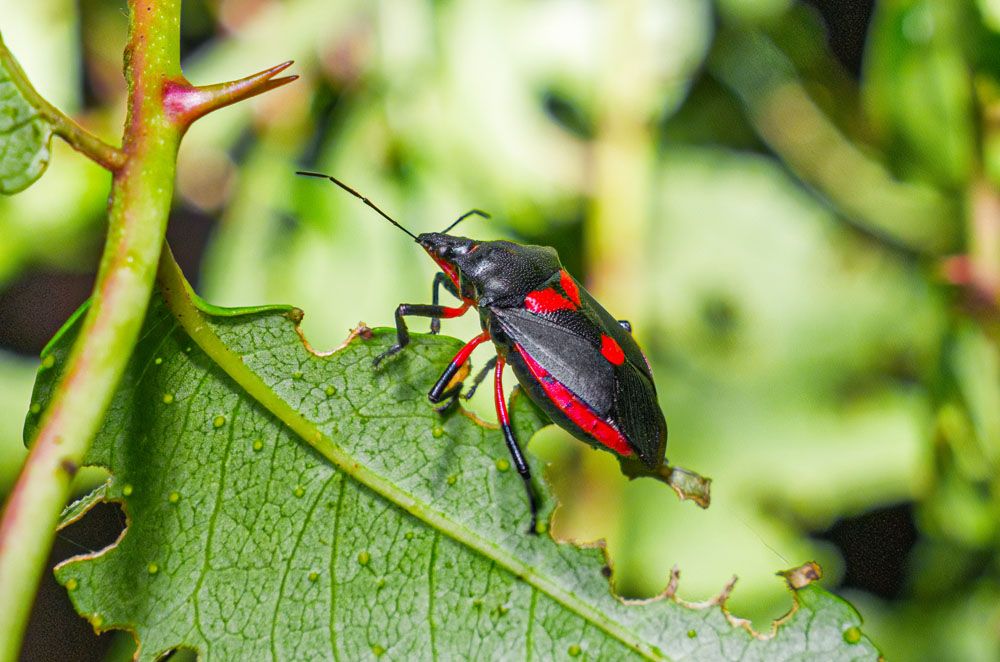
Florida Predatory Stink Bug – Pentatomidae family
Florida Predatory Stink Bug
Latin Name: Euthyrhynchus floridanus (Family: Pentatomidae)
Common Name: Predatory stink bug, Florida predatory stink bug
Appearance: Male bugs are 12 mm long while female bugs can reach up to 17 mm. They have a variable appearance, but they generally have a bluish-black to purplish-brown body with two red spots on the upper side and one on the lower side of the scutellum. They have long, thick legs and long segmented antennae.
Host Plants or Food: Bugs, Caterpillars, Beetles, Moths, Grasshoppers
Territory: Southeastern America
Mode of Damage: Beneficial Garden Insect
Habits and Life History:
- floridanus is found throughout the year but is mostly seen during spring and fall.
They spend their winter as an adult in some dry place under shelter.
Female predatory stink bugs lay eggs in the spring, which are barrel-shaped, having almost 1 mm diameter and short outer projection. A female lays 20-90 eggs one by one at a time. Eggs hatch in 19-33 days, and nymphs come out.
Nymph undergoes five instar stages before undergoing pupation.
The first instar is almost 1.5 mm long. They don’t go far away from the eggs and can be distinguished on this characteristic.
The second instar is 2-2.5 mm long and resembles much 1st instar.
The third instar is 4 mm long, and the bluish-black markings of the body become more visible and prominent because of the larger size.
The fourth instar is 6-7 mm long and resembles previous instars in appearance.
The fifth instar is 8-9 mm long. The wing pads become more prominent and visible.
Instar develops through pupal stage and then finally predatory stink bug.
Development time from egg to adult is approximately 60 days.
